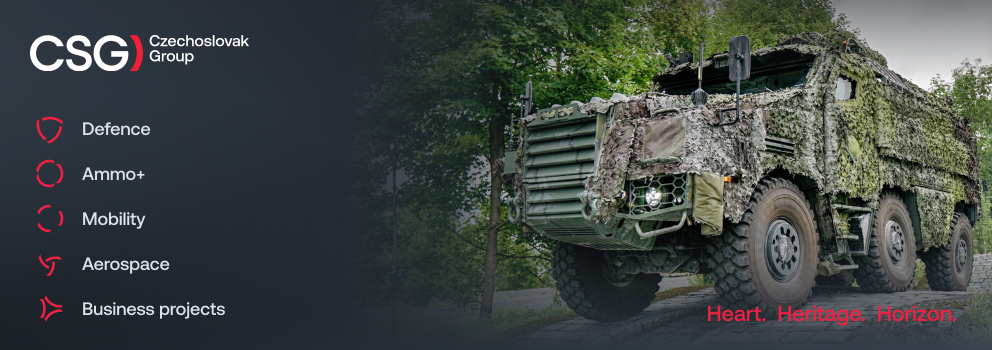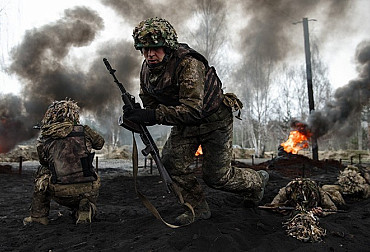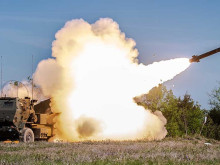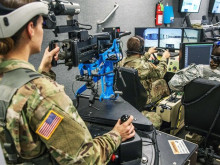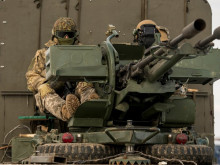Czech public attitudes toward national defense
One of the latest surveys by the STEM analytical institute maps the Czech public's attitudes toward national defense in the context of dramatic changes in the security environment. The results reveal significant differences in the perception of threats between experts and citizens, structured demographic patterns of willingness to defend the country, and declining support for increasing defense spending. These findings have key implications for the armed forces' personnel strategy, budget planning, and the future direction of NATO. The analysis of the data provides an empirical basis for rethinking traditional approaches to national defense in 21st-century democratic societies.
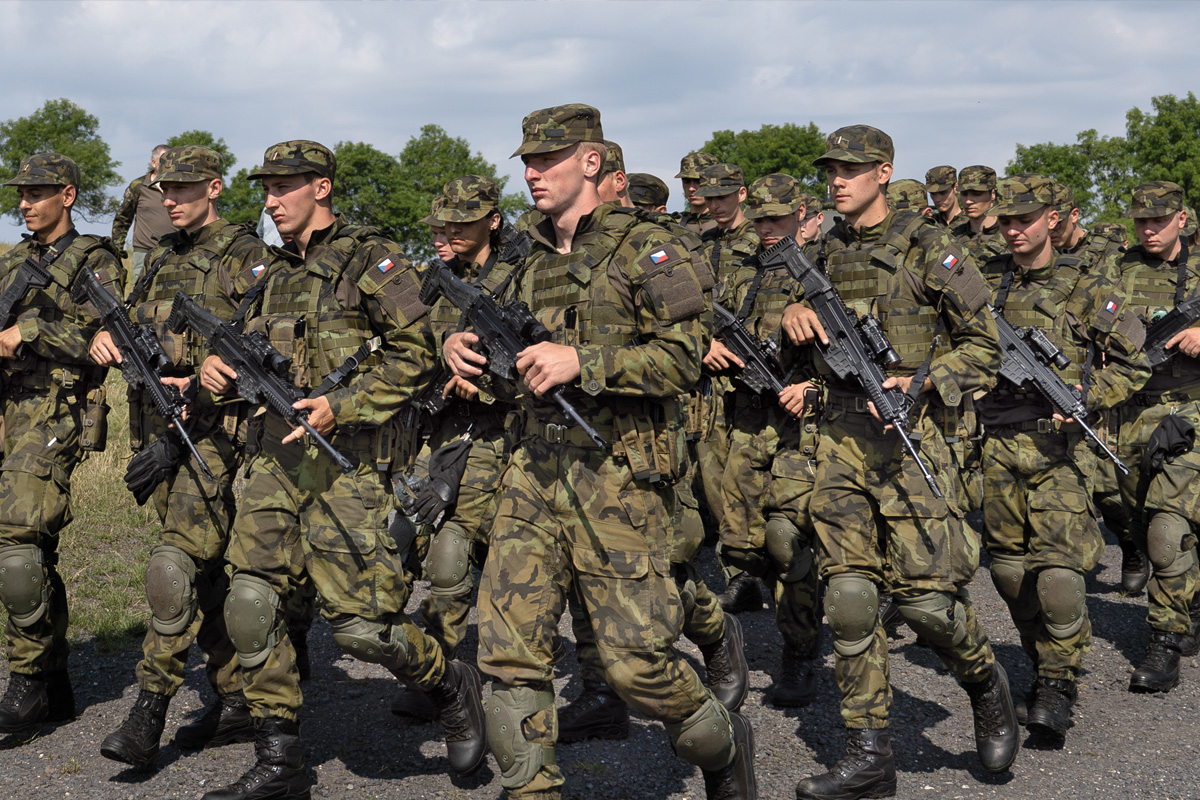
The STEM survey was conducted in June 2025 on a representative sample of 1,059 respondents during a period of fundamental geopolitical change. Russia's aggression against Ukraine fundamentally redefined the European security paradigm and resulted in a commitment by Alliance member states to increase defense spending to up to five percent of gross domestic product. For the Czech Republic, this means more than doubling its current defense investments from approximately CZK 87 billion to CZK 280 billion per year.
The timing of the survey is strategically important – the data was collected after uncertainty about US defense policy had intensified, but before the full impact of new alliance commitments on Czech society had materialized. The results thus capture attitudes at a critical time of change, when public opinion had not yet fully crystallized around new security priorities.
The survey methodology used a series of sequential questions mapping various forms of possible citizen involvement in national defense. This approach provides a more detailed view than traditional binary questions about willingness to defend one's country and allows for the identification of specific capacities and preferences of the population for different defense scenarios.
The Czech case has broader relevance for NATO members in Central and Eastern Europe, where historical experience with authoritarian regimes has created specific patterns of relations between citizens and state institutions. Understanding these attitudes is key to formulating effective defense strategies based on real societal capacities.
Defense readiness from a demographic perspective
The survey revealed that 28 percent of the Czech adult population would be willing to actively participate in defense with weapons in hand in the event of a military attack on the territory. This group displays clear demographic characteristics with important strategic implications.
Gender analysis shows significant differences: while 42 percent of men would participate in active defense, only 15 percent of women would do so. This difference has direct implications for mobilization planning and the structure of the armed forces. Given the current demographic composition, this means that the majority of potential "defenders of the state" would come from the male population, which requires specific approaches to recruitment and training.
The age structure confirms the expected trends: willingness to actively defend oneself with weapons declines with age, from 36 percent among 18-29 year olds to 23 percent among seniors over 60. Given the demographic trends in the Czech Republic, where the population is gradually aging, this means there will be a structural decline in mobilization capacity in the coming decades. Of the remaining 72 percent of the population who would not engage in direct combat, 53 percent of respondents expressed a willingness to contribute in support roles such as logistics, information technology, or healthcare.
In these activities, demographic differences are significantly balanced by gender and age, but a significant educational gradient emerges: university graduates show a 69 percent willingness to contribute, compared to 43 percent of citizens with lower education.
Untapped potential of civic preparedness
A significant finding is the interest of 14 percent of the population in short-term military training focused on basic defense skills. Among the younger generation (18-29 years old), this interest reaches 25 percent, which represents significant untapped capacity for the development of civil defense systems.
An analysis of preferred skills reveals specific priorities among citizens. The greatest interest is in health and first aid, followed by proper behavior in crisis situations. Conversely, the least interest is in cyber security and the use of firearms. These preferences have key implications for the design of educational programs and the allocation of resources within civil preparedness.
The current inability of the military to meet its recruitment targets contrasts with the expressed interest in short-term training. This suggests that the problem does not lie in the unwillingness of citizens to engage in defense activities, but in the mismatch between the formats of service offered and the actual preferences of the population.
Discrepancies in the perception of security threats
The survey revealed systematic differences between expert and public perceptions of security threats. The Czech public considers Islamic fundamentalism (55 percent describe it as a "very great danger") and terrorism (54 percent) to be the greatest threats. This is followed by international organized crime, while concerns about illegal migration have fallen from 74 percent in 2021 to 58 percent in 2025.
When looking at likely future threats, one-fifth of citizens consider a wave of illegal migration to the Czech Republic to be the most realistic. The second most frequently anticipated threat is disinformation and manipulation (16 percent identify this as the primary risk). Cyber attacks are perceived as likely by 30 percent of the population, but are more often ranked lower in the hierarchy of threats.
The difference is also evident in the perception of military threats: one-fifth of the population considers the spread of war to Czech territory a real possibility, which is a relatively low number given the ongoing conflict in Ukraine and expert warnings of escalation.
A demographic analysis of threat perceptions shows that concerns about Islamic fundamentalism, terrorism, and migration are more common among older age cohorts and citizens with lower levels of education. Conversely, university graduates are more likely to consider disinformation and manipulation to be the primary threat.
Negative trend in defense spending
A key finding is the decline in support for increased defense spending between the January and June 2025 surveys. At the same time, the number of those who consider current investments excessive or do not have no opinion on the matter has increased. This trend is occurring at a time of the highest security risks since the end of the Cold War.
STEM analyst Jiří Táborský identifies as a key factor the entrenched attitude of a significant portion of Czech citizens who prefer neutrality and "not getting involved in anything." This attitude reflects deeper cultural patterns that influence perceptions of international commitments and collective security.
From a budgetary policy perspective, this situation poses critical challenges for pushing through the dramatic increase in defense spending demanded by NATO. The lack of public support threatens the political sustainability of long-term defense projects and may complicate the fulfillment of commitments to allies.
Demographic data from the survey require a fundamental rethinking of the Czech Armed Forces' personnel strategy. The traditional model based on equal recruitment across demographic groups is proving unrealistic given the proven preferences of different segments of the population.
Gender differences in willingness to engage in active defense suggest a need for differentiated approaches to recruitment and personnel utilization. Given the balanced preferences of men and women for support activities, the military should focus more on developing these capacities and creating career paths that reflect the actual interests of different demographic groups.
The educational gradient in support activities has critical implications for technologically demanding defense systems. University graduates show a significantly higher willingness to engage in areas such as cyber defense, which should be reflected in targeted recruitment and incentive systems.
Systematic differences between expert and public perceptions of threats require a fundamental change in the security community's communication strategy. Instead of one-sided public education about officially recognized threats, it is necessary to develop dialogic approaches that take citizens' concerns seriously.
For example, cybersecurity, which experts consider critical but the public considers less relevant, could be presented in the context of protection against disinformation, which citizens perceive as a significant future threat. Similarly, military threats could be communicated in the context of their impact on areas of greater interest to citizens, such as economic stability, migration flows, or internal security.
The Czech findings have broader implications for the future of the Alliance as a pact based on shared costs and responsibilities. If similar trends of declining support for defense spending emerge in other member countries, this could undermine the fundamental principles of collective defense.
At the same time, however, the high willingness of citizens to engage in various forms of defense suggests the potential for alternative security models that rely less on costly professional armies and more on the preparedness of entire societies. The Nordic countries are already experimenting with concepts of "total defense"—involvement in the preparation and defense of the state—which could be adapted to Central European conditions.
Conclusion
STEM data provide an empirical basis for the development of a hybrid model of national defense that would combine a professional core with extensive civil preparedness networks. The demonstrated interest of a quarter of young people in short-term military training creates an opportunity for the systematic development of so-called citizen-soldier concepts, in which civilians are provided with military training.
Such a model could include compulsory basic defense training integrated into the education system, a network of local defense centers providing regular training for volunteers, and digital platforms for coordinating civil defense in crisis situations. Preferred skills such as health education and crisis management would form the basis of these programs.
The Czech experience suggests that NATO needs to undergo a fundamental transformation from an alliance of professional armies to an alliance of prepared societies. Instead of focusing exclusively on increasing defense budgets, the alliance could develop standards and programs for so-called citizen-based defense, which would leverage the proven willingness of citizens to participate in defense.
This approach could be more politically sustainable, as it would respect the real preferences and capacities of national populations, while also being more cost-effective than traditional models based on high-tech military systems.
Survey data point to important trends that are likely to influence security policy in the coming decades. Demographic aging will gradually reduce mobilization capacities, requiring proactive adaptation of defense strategies.
At the same time, the growing level of education among the population creates opportunities for more sophisticated forms of civil defense based on technological skills rather than physical strength. The so-called digital generation (the generation born after the digital revolution) shows an interest in short-term exercises, which suggests the possibility of developing new formats of defense preparedness tailored to their preferences and lifestyle.
The Czech Republic thus has an opportunity to become a laboratory for testing innovative approaches to national defense that could inspire other NATO countries facing similar challenges. Successful implementation of these concepts could provide a practical model for democratic societies to adapt to the changing security environment of the 21st century.
The key to success will be the ability to link citizens' proven willingness to take responsibility for their country's defense with effective institutions and programs that can translate this willingness into real defense capabilities. STEM data provides a solid empirical basis for this transformation.

